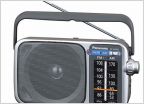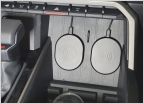-
Welcome to Tundras.com!
You are currently viewing as a guest! To get full-access, you need to register for a FREE account.
As a registered member, you’ll be able to:- Participate in all Tundra discussion topics
- Transfer over your build thread from a different forum to this one
- Communicate privately with other Tundra owners from around the world
- Post your own photos in our Members Gallery
- Access all special features of the site
Octane rating advice
Discussion in '3rd Gen Tundras (2022+)' started by Medic343, Jul 28, 2022.
Page 3 of 3
Page 3 of 3


 Recommendation on tools
Recommendation on tools Music, mp3, etc help an old guy out
Music, mp3, etc help an old guy out Knick in composite bed.
Knick in composite bed. 2022 Tundra won't let you enjoy Drive in Movies! - Toyota, please fix
2022 Tundra won't let you enjoy Drive in Movies! - Toyota, please fix Another Fast Wireless Charging Install
Another Fast Wireless Charging Install Box Streaming Thingies?
Box Streaming Thingies?














































































